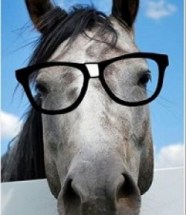
Seeking Nutrition Advice




The National Research Council (NRC) creates nutritional requirements for each species. With horses they use a calculator that factors in specific things for each individual horse in order to be certain the horse’s nutritional needs are being met.
As you could probably figure out, a race horse needs a different diet than a pasture ornament. A warm blood broodmare has different dietary needs than a miniature horse.
I found this horse feed calculator that is VERY similar on HorseMath.com Click this link and fill in the necessary info to determine what your horse(s) needs and to see if his current diet meets them.
http://www.horsemath.com/horse-feed-calculator
Peace and good feed,
The Nerd

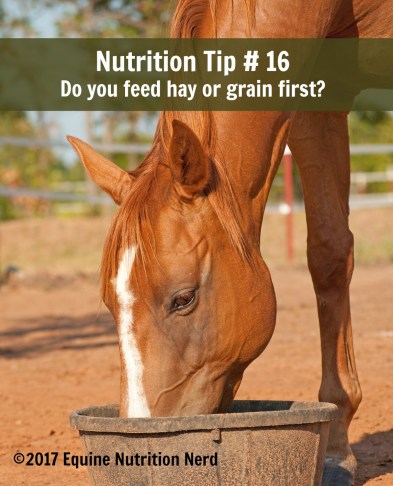
HAY BEFORE GRAIN, OR VICE VERSA?
Many people worry about which they should be feed first – hay or grain?
If you feed starchy cereal grains (oats, corn, barley, etc.) on an empty stomach, the horse will produce more acid than normal potentially leading to ulcers. Plus, the grain will leave the stomach quickly and head to the small intestine where it will not be fully digested.
If this undigested grain ends up in the hindgut where starch would be fermented by the bacterial population, then this can increase the risk of laminitis.
Your horse should have access to forage (hay and/or pasture) at will, therefore, when you feed your grain, the horse’s digestive tract should already have hay flowing through it.
If hay is present in the stomach first, it creates a physical barrier for the grain to move out of the stomach as quickly. When is hay present, the fiber in the hay mixes with the starch from the grain and then this enters the small intestine. Fiber’s presence slows down the process of digestion.
So the answer is to trickle feed forage all day using a slow feeder if necessary to avoid grain on an empty stomach. For more about the digestive tract click here. For more about slow feeders click here.
Peace and good feed,
The Nerd
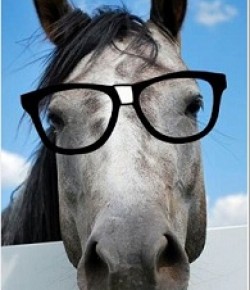
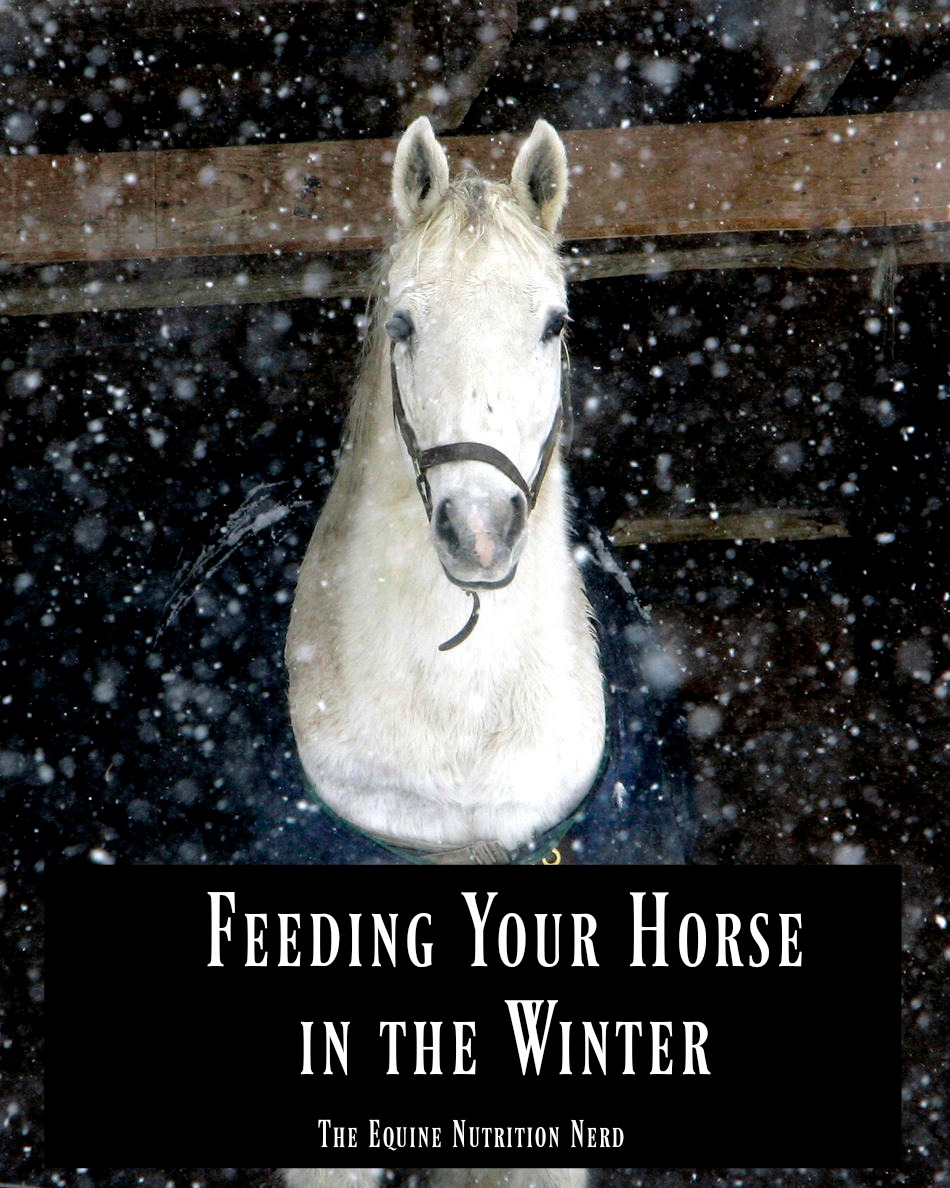
As temps dip down and the weather stays cold, a horse’s nutritional requirements change. It’s best to have a horse be a tad over weight (maybe a 6-7 BCS) entering the winter and with a thick hair coat and fat cover.
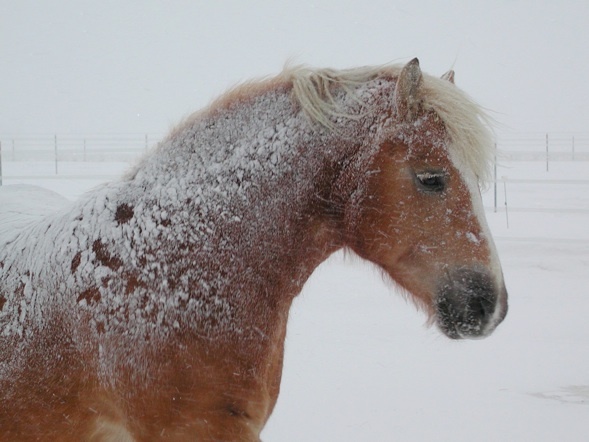
It has been estimated that a horse with a healthy winter coat, that can keep dry, will be comfortable at temperatures down to 18° F; and if the horse has access to a shelter it can tolerate temperatures as low as -40° F.
If you are lucky enough to be able to ride throughout the winter and clip your horse then understanding proper blanketing is a must!!

As winter’s temperatures drop a good rule of thumb to remember is for every degree below 18°F the horse requires an additional 1% energy in their diet. This might prompt you to ask, “what is the best source of additional dietary energy during the cold winter months?”
Good question! But first we must understand how horses utilize the dietary energy in the winter to keep warm. They do it in a couple of different ways. First, there is the heat given off as a by-product of normal metabolic processes. Secondly, there is the heat generated from microbial fermentation of forages that occurs in the hindgut during digestion.
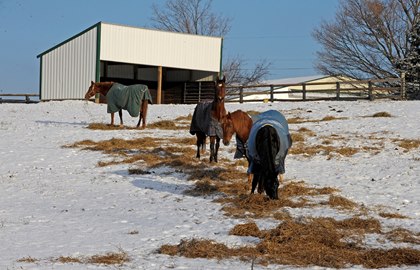
Some horse owners believe that feeding more concentrates (because they are energy dense), will help keep the horse warmer. But this isn’t how the horse was designed. We must remember that horses are designed to eat fiber/forage. Another reason to not focus on grain for heat is that there isn’t as much heat produced as a byproduct of digestion, absorption and utilization of grains as there is from the microbial fermentation of forages.
So, you should think about increasing the amount of forage in the diet NOT GRAIN to help meet the increasing energy needs resulting from winter weather. This will result in an increase in microbial fermentation which will help keep the horse warm.
Here’s an example, if a 1000 lb horse needed 16 lbs of good-quality hay each day when the temperature was 18° F, its requirement could be expected to increase by approximately 2 – 2.5 lbs to 18 -18.5 lbs if the temperature dropped to 0° F. Note: The increased dietary energy requirement would be even greater if the horse didn’t have access to shelter.
An additional very important point to consider is the need to provide access to clean, “warm” water. There was a study that determined that the most pleasing temperature of water for a horse is 45-65 degrees. So bucket warmers, and insulated troughs are great ideas to use in the winter. If the water is ice cold, the horse will not drink as much.
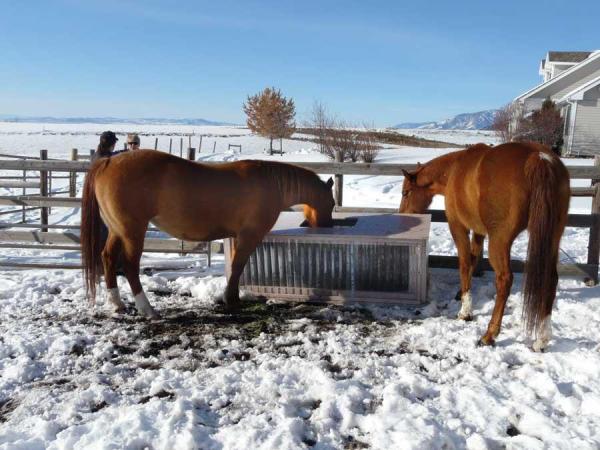
There are a few reasons beyond the obvious why good water intake is so important. A horse will require a lot more water when eating dried feedstuffs like hay, compared to horses grazing on lush pasture as pasture grass has water in it. In addition, horses usually move less in the winter due to lack of exercise and confinement. Movement aides in digestion and keeps things moving through the gut. Water also helps this process. The goal should always be to maximize water consumption to help prevent the possibility of dehydration and colic.
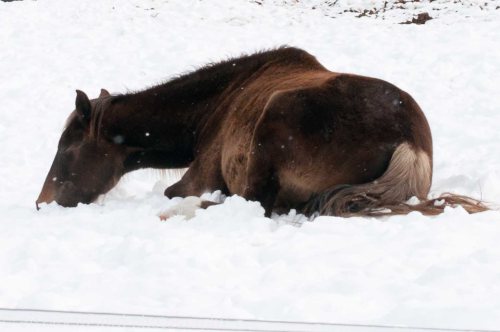
Winter adds an extra layer of concern for your horse’s health and nutrition needs. Simple rules such as increased forage and water intake will go a long way to help insure you both survive the coldest months!
Peace and good feed,


With winter fast approaching in parts of the US, it’s a good time to review the affects that frost can have on certain plants horses may grass on.
Some deciduous leaves can be deadly after a frost or after they have wilted due to broken branches, fall leaf shed or storm damage. Leaves that tend to be most toxic are those of red maple and cherry trees.

RED MAPLE LEAF
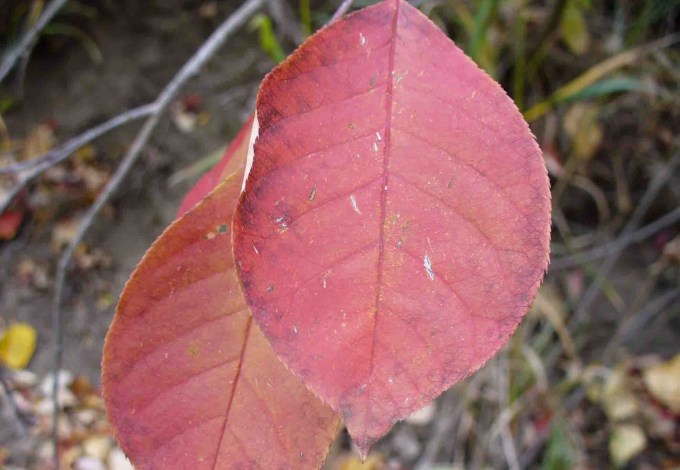
Choke Cherry Leaf-Fall Color
This a good time of year to identify any seasonally toxic trees on your property, and keep horses from their fallen or frost damaged leaves for at least 30 days.
Even though these leaves are not commonly eaten, horses can accidentally ingest them, especially if hungry or bored. HorseDVM has a terrific site with symptoms, identification, and treatments.
Here is a link to all you need to know about Horses and Red Maple
Here is a link to all you need to know about Horses and Cherry Trees
Nitrate toxicity can also be an issue after frost with some nitrate-accumulating plants. Generally, this is only a concern with some grass species where high nitrogen has been used and with some weeds that are know to be nitrate accumulators like lambsquarter and pigweed.
It is recommended that horse owners wait up to a week after a killing frost before grazing areas where nitrate toxicity is a concern. Prussic acid accumulation can also be an issue after a frost with some specific warm-season annual grasses like sorghum and sudan grasses, but these grasses aren’t commonly grazed by horses or fed in horse quality hay.
Here is a link to a full list of equine poisonous plants (not just after frost) from HorseDVM
Poisonous Plants For Horses Database
I hope you NEVER have to deal with toxicity from plants with your horse! Please share this post so other horse owners are aware too.
Peace and Good Feed,
The Nerd

You must be logged in to post a comment.